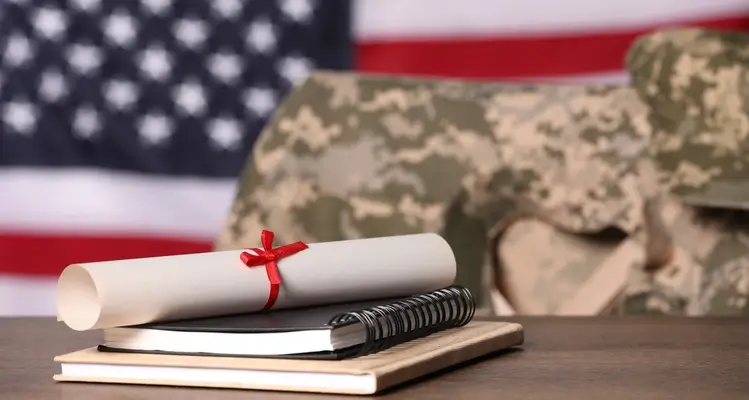If you’re aiming to buy a home using a VA loan or seeking certain veterans’ benefits, you’ll often need a Certificate of Eligibility (COE).
This crucial document verifies your military service history and entitles you to the advantages of a VA-backed mortgage.
In this comprehensive guide, you’ll learn the steps, documents, and methods to secure your COE and move closer to achieving your homeownership goals.
What Is a Certificate of Eligibility (COE)?
A Certificate of Eligibility is an official document issued by the U.S. Department of Veterans Affairs (VA). It confirms your qualification for specific veteran-related benefits, including the VA home loan program.
The COE verifies that you meet the necessary service requirements—whether you’re a veteran, active-duty service member, member of the Reserves, or National Guard—and ensures that lenders can process your VA-backed loan.
You can obtain your COE by applying online through the VA’s eBenefits portal, working with an approved lender, or submitting Form 26-1880 by mail. You’ll need proof of service (e.g., DD-214) and relevant documents, depending on your status (veteran, active-duty, or spouse).
VA Loan Eligibility Calculator
Why You Need a COE
Before you start home shopping, you’ll want to confirm your eligibility for a VA-backed mortgage. The COE is what lenders look for to determine whether you’re entitled to the VA’s financial backing. Having a COE means you’re likely qualified for:
- Zero down payments (in many cases)
- Lower interest rates compared to conventional loans
- No private mortgage insurance (PMI)
- Limits on closing costs
Without a valid Certificate of Eligibility, your lender cannot proceed with a VA loan. It’s also a core requirement if you wish to refinance using VA benefits or restore your entitlement after selling or refinancing a property.
Eligibility Requirements
The VA sets specific service requirements. Veterans and active-duty service members must meet minimum service durations. Reservists and National Guard members have their own criteria. Surviving spouses can also qualify under certain circumstances (for instance, if the veteran died in service or from a service-connected disability).
| Service Category | Basic Eligibility Criteria |
|---|---|
| Veterans (Active Duty After 9/16/1940) | At least 90 days (WWII, Korean War, Vietnam) or 24 continuous months post-1980 |
| Active-Duty Service Members | Currently active duty with at least 90 continuous days of service |
| National Guard and Reserves | 6+ years of service or called to active duty for at least 90 days under Title 10 |
| Surviving Spouses | Unremarried spouse of a veteran who died in service or from a service-connected disability |
Methods to Obtain Your COE
You can obtain your Certificate of Eligibility (COE) through three main methods:
- Online: eBenefits portal or VA.gov
- Through a Lender: VA-approved lenders can use VA’s Automated Certificate of Eligibility (ACE).
- By Mail: Complete VA Form 26-1880 and mail it to the VA Loan Eligibility Center.
| Method | Pros | Cons | Processing Time |
|---|---|---|---|
| Online (eBenefits) | Fast, immediate submission | Requires online account setup | Instant to 48 hours |
| Through Lender | Lender handles paperwork | Dependent on lender’s speed | Same day to a few days |
| By Mail (Form 26-1880) | No need for online access | Slower processing | 2-6 weeks |
Required Documents
To process your COE, you’ll need proof of service, varying by military status:
- Veterans: DD-214 (Member 4)
- Active-Duty: Statement of service (signed by commander/personnel officer)
- Reserve/National Guard: Points statement and proof of honorable service
- Surviving Spouses: Veteran’s death certificate, marriage license, VA Form 26-1817
✅ Checklist: What You Need to Apply for a COE
Before applying for your Certificate of Eligibility, make sure you have the right documents ready. Having everything upfront can help avoid delays and make the process smoother, especially if you’re working with a lender.
- DD-214 (Veterans) or Statement of Service (Active-Duty)
- Social Security Number
- Details of any prior VA loans (if applicable)
- Marriage license and death certificate (Surviving Spouses)
🧠 Tips for a Smooth COE Process
Applying for a COE is usually straightforward, but there are a few things you can do to avoid delays or rejections. These tips can help you get approved faster, especially if your records require manual review.
- Use the eBenefits portal for the fastest turnaround
- Ensure forms are complete, signed, and legible
- Double-check your service dates and documentation
- Let your lender assist if you’re unsure what to submit
🔄 Reusing Your COE for Another VA Loan
Your COE isn’t a one-time-use benefit. If you’ve sold your home or paid off your previous VA loan, you may be able to reuse your entitlement. This flexibility is a huge perk of VA loan benefits.
- Request restoration after selling or refinancing
- Submit VA Form 26-1880 with proof of payoff
- Partial entitlement can be used for another purchase
- Talk to your lender about remaining entitlement options
Common Eligibility Issues
Common pitfalls in obtaining a COE:
- Mismatched service records causing manual review
- Incomplete forms or missing signatures
- Incorrect DD-214 copy provided
- Additional documentation required for surviving spouses
How to Check Your COE Status
To track your COE application:
- Log into the eBenefits portal for updates.
- Contact the VA Loan Eligibility Center or nearest Regional Loan Center by phone.
Renewing or Restoring Your COE
You can renew or restore your COE if you sell/refinance a VA-backed home:
- Confirm prior VA loan payoff.
- Submit payoff/sale documentation to VA.
- Request entitlement restoration using VA Form 26-1880 or via eBenefits.
Frequently Asked Questions
1. Can I still get a COE if I have bad credit?
Yes, the COE confirms eligibility for VA benefits, but loan approval depends on lender credit standards.
2. How long does it take to receive the COE once I apply?
Instant to several weeks, depending on method and manual review needs.
3. Do I need a COE for a VA IRRRL (streamline refinance)?
Usually no new COE required, but confirm with your lender.
4. What if I lose my COE?
You can reprint online or request another through your lender.
5. Is there a fee for obtaining the COE?
No, obtaining a COE is free through the VA or VA-approved lenders.
6. Can a spouse of a living veteran get a COE?
Generally no, unless as a co-borrower on a joint VA loan or in special cases.
7. Do I need a new COE if I switch lenders?
No, your existing COE remains valid with any lender.
8. Can I apply for the COE without a DD-214?
Yes, but the VA typically requires it for verification; request a replacement if needed.
















